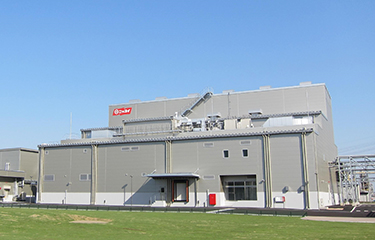DHA, a type of omega-3 acid, is becoming a profit driver for both Maruha Nichiro and rival seafood company Nissui – along with other chemicals derived from marine sources, including EPA (eicosapentaenoic acid), chondroitin, and squalene – helping add to the bottom lines of two of the world’s largest seafood companies, both based in Tokyo, Japan.
The signs of the chemicals becoming increasingly important are highlighted in Maruha Nichiro’s most-recent financial report, where the company noted strong sales of the chemicals. The company established the Maruha Nichiro Central Research Institute in 1990 in Tsukuba City, Japan, for research and development of foods and pharmaceuticals, and the institute has since led efforts that resulted in the first fish sausage in Japan that was able to carry functional health claims.
In the 1990s, the increasing popularity of health food, with the goal of avoiding lifestyle-related diseases through better dietary inputs, attracted Maruha Nichiro's attention. One of its first forays into that market was a fish sausage rich in DHA, which studies have shown lowers triglyceride levels.
The company extracted oil containing DHA from tuna heads, but soon ran into a problem: the sausages developed a strong fishy odor before the 90-day “best-by” date, due to oxidation. In response, the company successfully developed methods to minimize exposure to air during extraction. Maruha Nichiro then developed a fish sausage with about 34 times the DHA of a regular fish sausage, and confirmed its positive effects on health through clinical trials. After examination by Japan's Ministry of Health, Labor and Welfare and the Cabinet Office, Food Safety Committee, its functional health claims were approved. In the fall of 2005, the company launched "DHA Lisa La Sausage" bearing the government’s “Tokuho” mark, showing that it has a confirmed health function.
Since then, Maruha Nichiro has launched a bevy of other products promoting DHA, include a ready-to-eat fish sausage stick made from using sardines from Choshi, Japan.
In Japan, it is legal to make functional health claims for foods, if backed by scientific evidence. For DHA/EPA, a blood triglyceride lowering effect was established from August 2015, and for DHA, a memory function supporting effect was established in February 2016. Since then, it has become possible to display these functional claims on food products.
To promote the health benefits of DHA more widely, Maruha Nichiro created a website called the "DHA Lab," which lists academic research tying DHA consumption to improved brain function, and other recent academic literature showing the benefits of DHA to human health.
While Maruha Nichiro has focused on functional foods, there is also a thriving market for DHA supplement pills, with Suntory Wellness, DHC, NuSkin, Amway, FANCL, Herbalife of Japan, Shaklee Japan, Nissui Pharmaceutical, and Neways Japan all producing DHA supplements.
Nissui is another major seafood company in Japan that has branched into fortifying food products with EPA and DHA. Nissui-backed research at Chiba University's School of Medicine beginning in 1980 led to the approval of EPA as a drug for arteriosclerosis obliterans and hyperlipidemia in 1990 and 1994, respectively, for which Nissui produces and supplies EPA in the form of pharmaceutical raw materials.
Nissui imports sardine oil from Peru, stores it in tanks in Hokkaido, Japan, and then sends the oil by domestic tanker to its EU/HACCP- and GMP-certified fine chemical plants in Tsukuba City and Kamisu City, located in Ibaraki Prefecture, Japan. There, the oil is processed to a high purity, fishy odors are removed, and any pollutants such as dioxins are removed using technologies developed in-house.
In October 2021, Nissui announced it had started shipping pure EPA active pharmaceutical ingredient (API) to United States. According to the company, the ingredient has an EPA purity of 96.5 percent or higher. Nissui has also gained certification to export DHA to the U.S.A. as an API. Sales volume of EPA/DHA pharmaceutical raw materials rose there by over 35 percent between 2018 and 2020, while in Japan, they rose by only around 12 percent.
Nissui also announced in December 2021 that a research collaboration with Kyushu University, Miyazaki University, and Konan University found a new biological pathway by which some marine protists, the labyrinthulomycetes, can produce omega-3 fatty acids. The study revealed that some species produce DHA through a pathway that had not been previously identified. Furthermore, it showed that by disrupting the expression of certain genes, EPA can be produced by some labyrinthulomycetes, a group of parasites that feeds on algae and seagrasses. This discovery could be used to develop a method for sustainable production of omega-3 fatty acids using marine microorganisms at an industrial level.
A Nissui representative told SeafoodSource that the company is aiming for “gene editing,” which only deletes a gene, rather than “gene modification,” which add new genes from other organisms, in order to extract the DHA and EPA from the labyrinthulomycetes. However, despite the likelihood that EPA/DHA will eventually be produced through industrial scale cultivation of gene edited micro-organisms, it may be a long time before they replace sardines and tuna heads as a source, the representative said.
“There is not any projected timeline for pilot production or commercial production using this method,” he said.
Photo courtesy of Nissui







